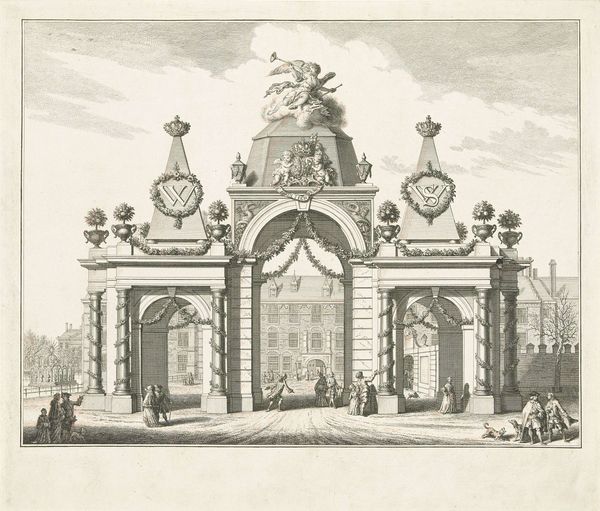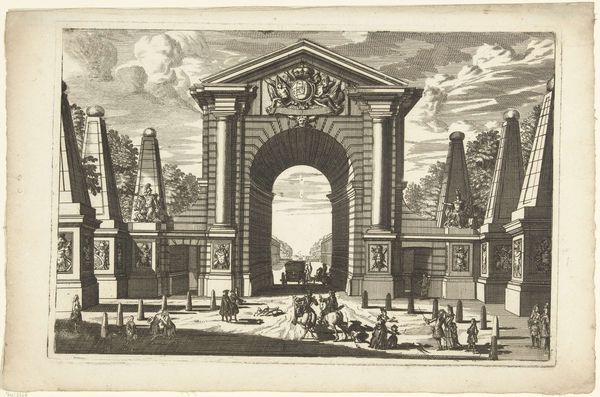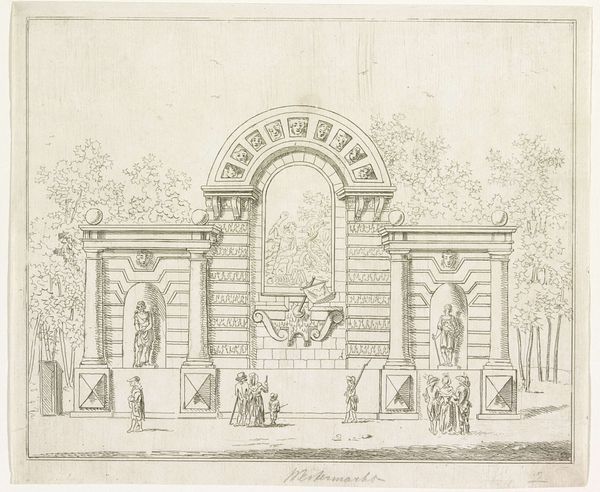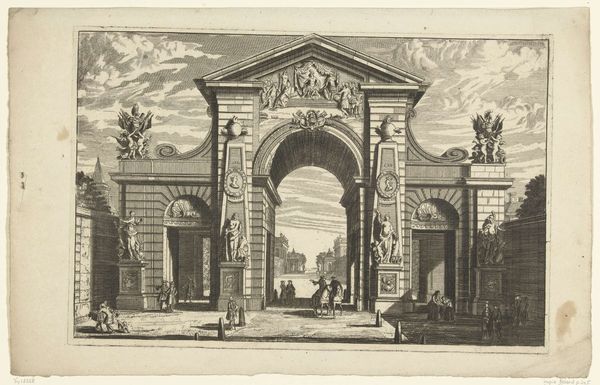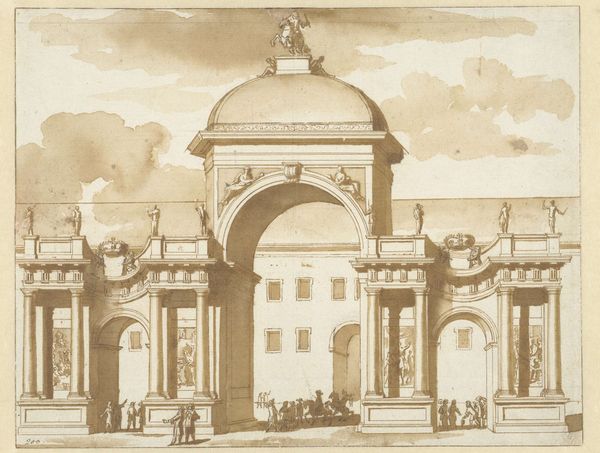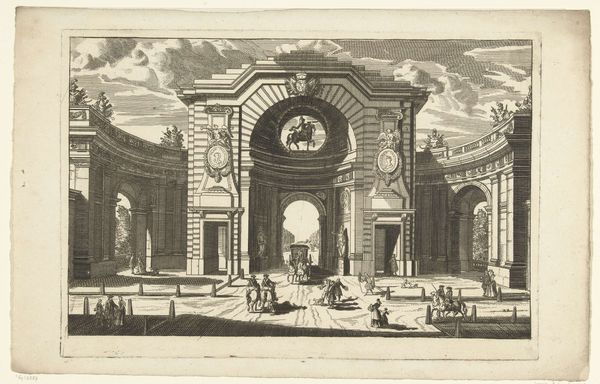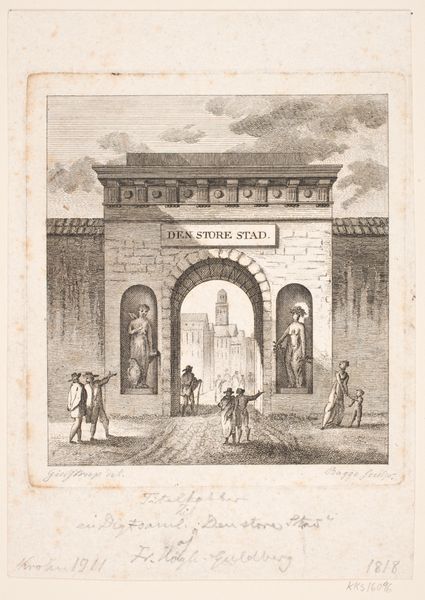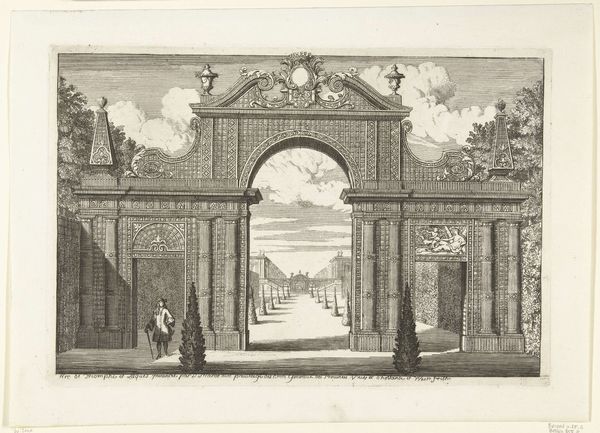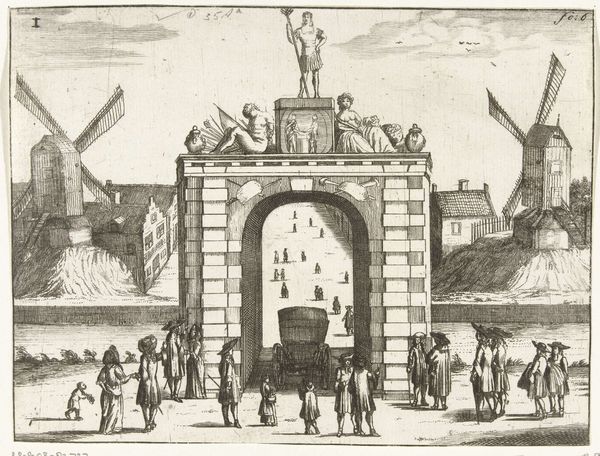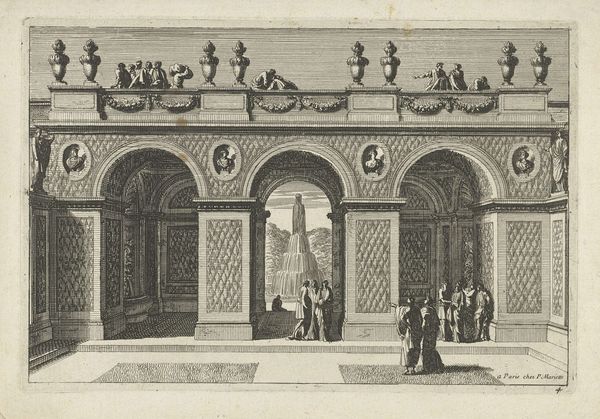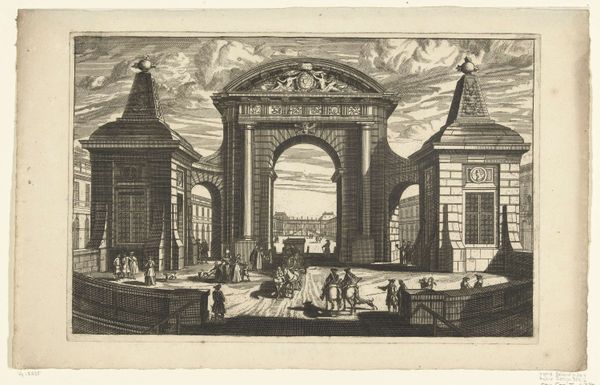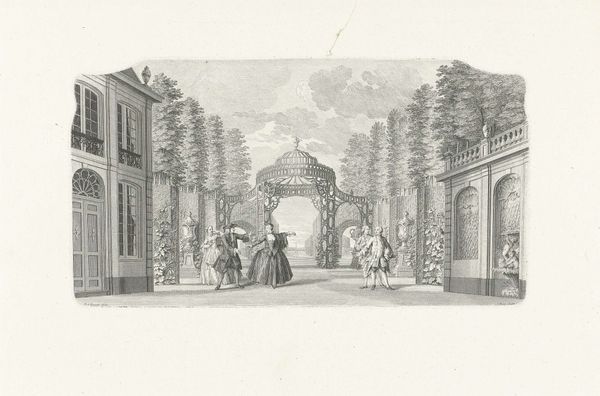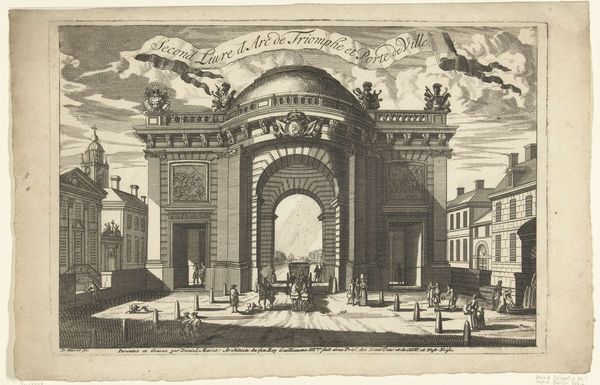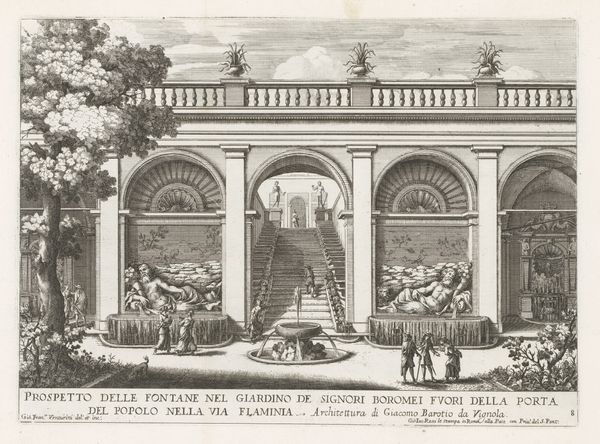
drawing, watercolor
#
drawing
#
neoclacissism
#
watercolor
#
cityscape
#
watercolour illustration
#
history-painting
#
watercolor
Dimensions: height 221 mm, width 271 mm
Copyright: Rijks Museum: Open Domain
Curator: Looking at this delicate watercolor by A. Verkerk from 1795, entitled "Vernietiging der Aristocratie, decoratie op de Westermarkt, 1795," I am struck by how deliberately composed it is. Editor: Yes, it’s meticulously rendered. There is a performative theatricality even in this image. It has this almost pastel wash to it, softened edges around a triumphal, celebratory moment of iconoclasm and perhaps retribution. Curator: Indeed, the materiality of the decoration – the wood, the paint, the deliberate, and very public, placement – would have all contributed to a specific message the artist intended to convey in this drawing. It’s an explicit political gesture made tangible in the urban landscape. Editor: Exactly! We can see how the decorative program re-purposes neoclassical architecture to support radical democratic values following the Batavian Revolution. I mean, look at how classical motifs –the sculpted heads, the arches–are refigured here as symbols of liberation rather than power. What kind of audience do you think saw this? What impact did it make on social relations? Curator: Probably diverse: Amsterdam’s Westermarkt attracted all sorts of classes. They had a hand in the making and commissioning this artwork in a physical and cultural way. Editor: Certainly. Think of the skilled laborers crafting this enormous structure—carpenters, painters, sculptors, the sheer labor that went into it speaks to the Revolution. In what other instances might a craft be so valued as it once was in pre-industrial moments? It would bring awareness back to this. It demands engagement. Curator: Precisely! Its location was key. It brought new order to a public gathering spot with so many moving parts. It provided those involved with an opportunity to consider and enact revolution. Editor: Right, so many intersecting identities, brought together in revolutionary, historical terms, in this urban intervention. Even now, we’re invited to reckon with legacies and their constant renegotiation. It's a fascinating, complex statement about public art and its role in shaping political discourse. Curator: Absolutely. This wasn't merely decorative but intrinsic to building that political discourse through craft and placement. Editor: It’s really a potent reminder that how we construct, deconstruct, and reconstruct imagery reflects—and influences—our values and our relationship to power.
Comments
No comments
Be the first to comment and join the conversation on the ultimate creative platform.
